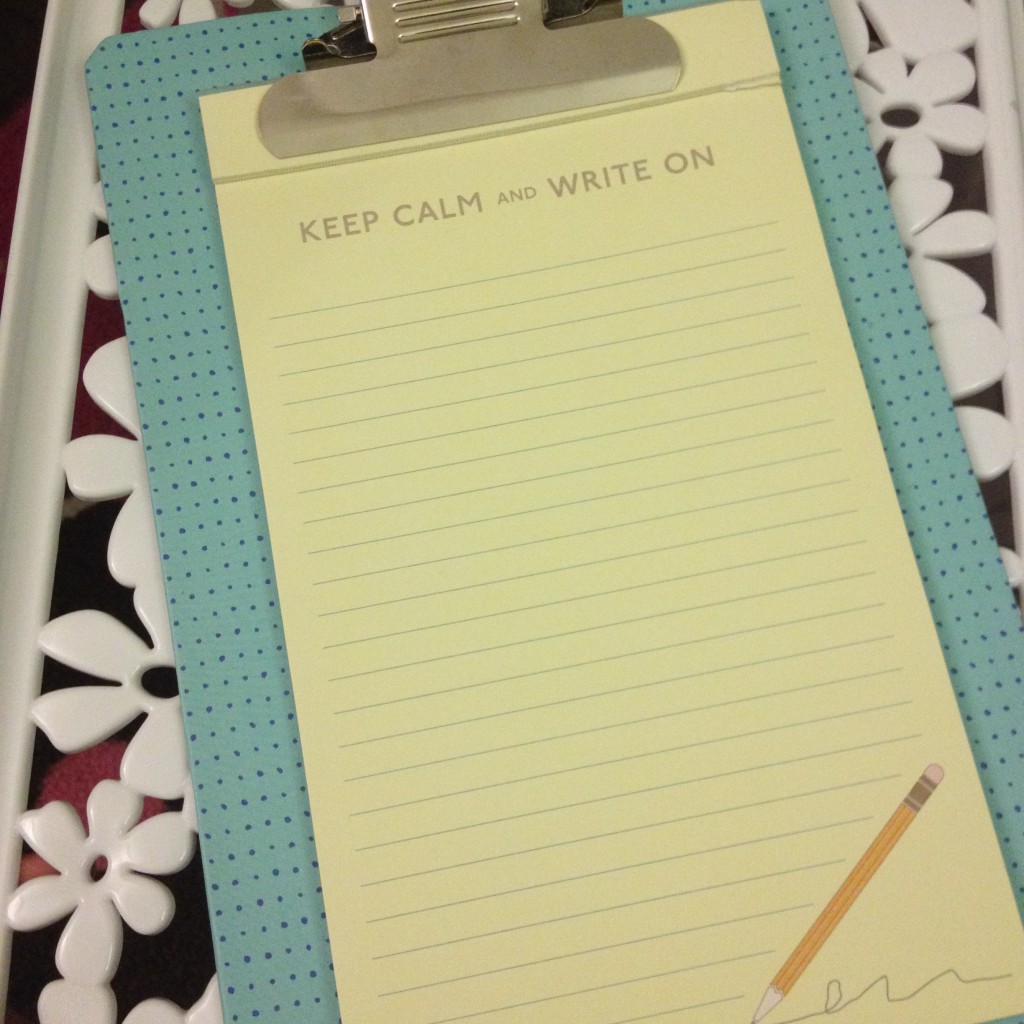The last time you heard from me, it was 2014. Holiday lights were on and deadlines were far off. Now that reading period is upon us, it’s time to start your research assignments if you haven’t already. To find materials, organize, and finally write can be a time-consuming process – but a strong outline can both save time and prevent stress. Outlines undoubtedly vary by discipline, but I use the same general strategy for all my classes: keep things concise. As you can see, the strategy itself is concise. And concision is effective.
It’s temping to write a stream of thoughts about your subject, but not always useful; so start by limiting yourself to a single sheet of a small piece of paper. I use a lovely little clipboard that my sister gave me when I graduated from high school:

This awesome gift has 24 lines (yes, I counted). I devote the first 3-4 to a thesis statement. The rest are filled with a topic for each major section, and then the statistics/quotes for evidence, flanked by their source. Concise formatting doesn’t mean your sentences should be imprecise, however. An outline is no place for generalities – which is a nice way of saying, “Don’t assume you’ll remember tomorrow what your shorthand meant today.” While ideas are fresh in your head, make them count with carefully worded, full theses and topic sentences to frame your future paper. It’ll help orient your argument once you begin to write.
As you “Keep Calm and Write On,” however, don’t write too much. Remember, it’s an outline. There are things you should be keeping out: description, analysis, and expanded context. Keep it particularly short in the list of evidence supporting your topic sentence. A good outline includes just enough evidence so you don’t have to search through articles during the writing process. You can explain the correlation between your statistics/quotes and thesis later on.
It would be great if all outlines worked perfectly the first time, but research has a habit of forcing you back to the start (research…maybe I’m on to something here). After preparing an outline, you might notice it makes sense to reorganize the order of certain topics. For me, if my outline doesn’t fit on a single clipboard sheet, I redo it entirely – I know the strongest arguments are those that can be presented concisely, so I narrow down my focus. Yes, this can take time; but it also saves time from frustrating outlines that are too expansive to be useful. I promise the net calculation works out in your favor.
Basically, think of an outline as the master plan for your research. You have every incentive to make it a masterpiece — by using concision, clarity, and maybe a nice gift from your sister.
— Melissa Parnagian, Social Sciences Correspondent

